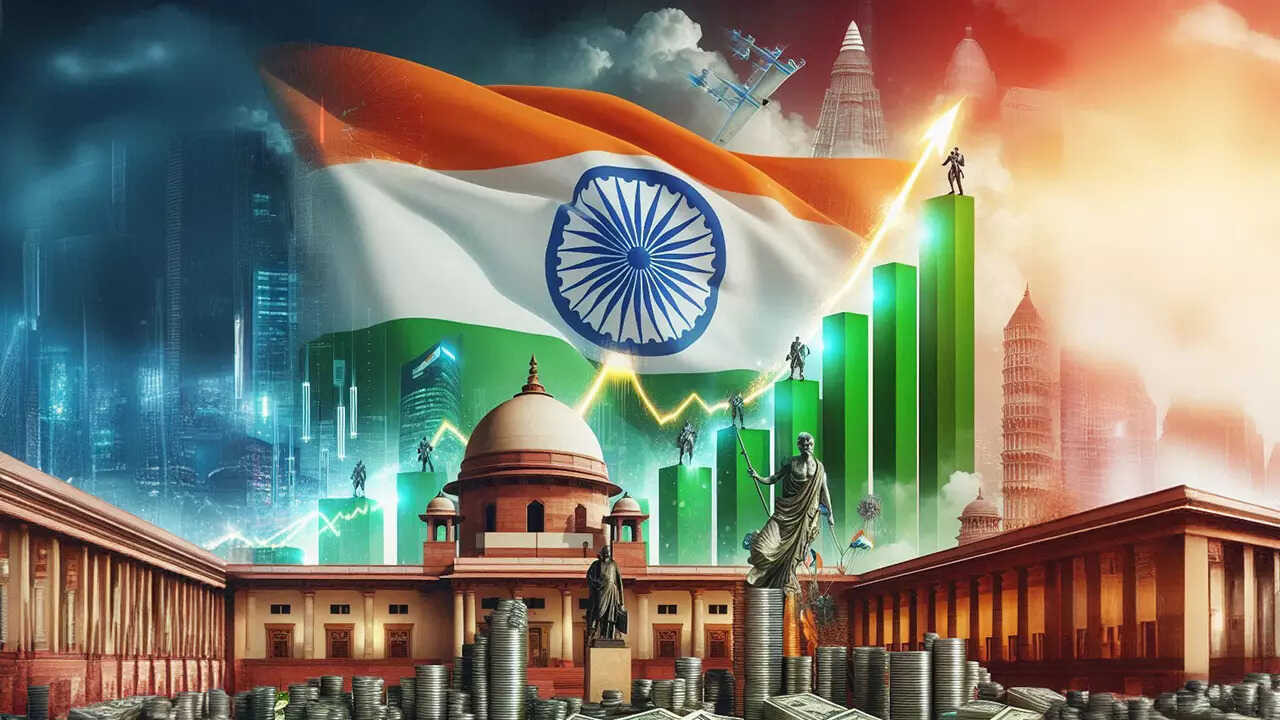Fitch Ratings has revised India’s FY26 GDP growth forecast upwards to 6.9%, citing strong domestic demand and easing financial conditions. Despite short-term trade uncertainties with the US, a trade deal is anticipated. India’s economic momentum is robust, with significant growth in the service sector and consumption expenditure.
India’s Economy: A Spring in its Step?
The global economic outlook might be casting a long shadow, but India seems to be dancing to its own beat. Recent analysis suggests a brighter picture for the Indian economy than previously anticipated, with growth forecasts being revised upwards. Could this be a sign of genuine resilience, or just a temporary reprieve? Let’s dive into what’s fueling this optimism and what challenges still lie ahead.
For some time, predictions painted a picture of steady, if somewhat unremarkable, growth. Now, however, there’s a palpable sense of upward revision. Several factors are coalescing to create this more positive outlook, but the most significant driver is undoubtedly strong domestic demand. Forget export-led booms; this is about Indians buying Indian (and foreign) goods and services, powering economic activity from within. This consumer confidence, fueled by factors like increasing urbanization and a growing middle class, is proving surprisingly robust.
Riding the Wave of Strong Domestic Demand
This surge in domestic consumption is not just about fleeting trends. It is underpinned by government initiatives aimed at boosting infrastructure development and creating a more favorable business environment. Think massive projects like highway construction, railway upgrades, and affordable housing schemes. These projects not only create jobs directly but also stimulate demand for raw materials, construction equipment, and a host of other related services. This creates a ripple effect, boosting economic activity across various sectors.
Furthermore, the government’s focus on streamlining regulations and improving the ease of doing business is attracting both domestic and foreign investment. This investment, in turn, is fueling further growth and innovation. It’s a virtuous cycle that, if sustained, could propel India to even greater economic heights.

The RBI’s Next Move: Another Rate Cut on the Horizon?
Of course, no economic forecast is complete without considering the role of monetary policy. The Reserve Bank of India (RBI) has been carefully navigating the tricky terrain of inflation control and growth promotion. With inflation showing signs of moderating and economic growth gaining momentum, expectations are building for another interest rate cut later this year.
Such a move would further stimulate borrowing and investment, providing an additional boost to economic activity. However, the RBI will need to tread cautiously, ensuring that any rate cut doesn’t reignite inflationary pressures. It’s a delicate balancing act that requires a keen understanding of both domestic and global economic trends. It may be a good idea to compare the situation with other countries and their central banking policies to understand the full effect of such policy choices. Consider reading about other financial instruments offered to banks in India to strengthen your knowledge.
Navigating the Global Headwinds
Despite the positive outlook, India is not immune to the challenges posed by the global economic slowdown. Geopolitical tensions, supply chain disruptions, and rising energy prices continue to cast a shadow over the global economy. These factors could dampen India’s export performance and increase imported inflation.
However, India’s relatively strong domestic demand provides a buffer against these external shocks. Furthermore, the government’s efforts to diversify export markets and promote import substitution are helping to mitigate the impact of global headwinds. The hope is that this strategy will further strengthen the strong domestic demand.
A Moment of Opportunity?
The revised growth outlook presents India with a significant opportunity. If the country can capitalize on its demographic dividend, continue to invest in infrastructure, and maintain a stable macroeconomic environment, it could emerge as a major engine of global growth in the coming years. The window to capture this moment of opportunity may depend on how well the RBI and government work to anticipate coming economic challenges.
In conclusion, while the global economic landscape remains uncertain, the Indian economy appears to be on a more positive trajectory, largely driven by resilient domestic demand. The coming months will be crucial in determining whether this momentum can be sustained and whether India can truly break free from the constraints of global economic headwinds. The key to achieving this lies in continued policy support, strategic investments, and a relentless focus on improving the competitiveness of the Indian economy.







